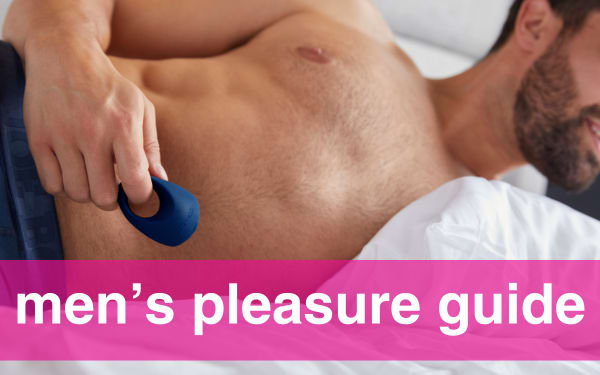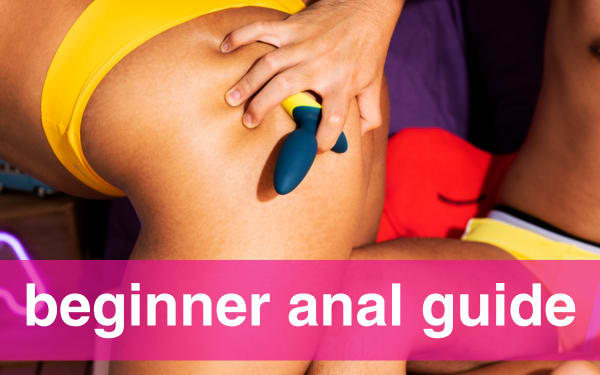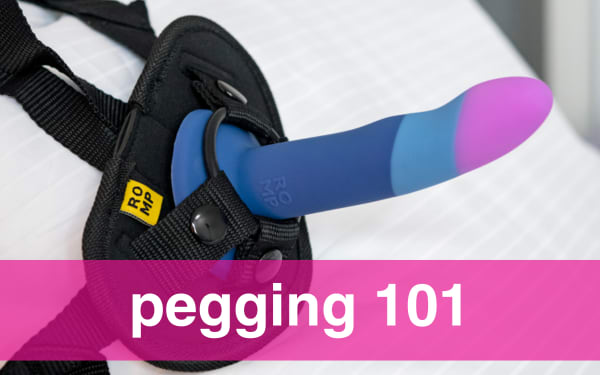October is Breast Cancer Awareness Month
The National Breast Cancer Foundation reports that a new patient is diagnosed with breast cancer every two minutes. While you’re showing your support for those who’ve been diagnosed with, or survived breast cancer- whether you do it through donating directly to a charitable organization, purchasing products that donate to breast cancer causes, bringing awareness to the importance of breast cancer research, or even simply wearing a pink ribbon to show your solidarity- there’s one thing that everyone should do this October.
Check yourself.
At Babeland, we love talking about touching yourself- but this time, we’re talking about doing so to stay aware and informed, so you can seek treatment should you see any signs that could be an indicator of breast cancer.
So, how do you check yourself? A breast self-exam is pretty simple, and you want to make sure that you do it at least once a month.
Here's how:
- Check yourself out in the mirror first- either standing or sitting up as straight as you can- with your arms at your sides, and then with them raised above your body. Look for any major visual changes in your breasts/chest. Take an extra moment in front of that mirror to remind yourself how good-lookin’ you are.
- When you are lying down flat, the tissue lies flatter against the body- giving you the best read on your self-exam, so take off any clothes on your chest and hit the bed (or couch, or floor).
- One at a time, bring your arms up over your head, bending the arm at the elbow either above or underneath your head so that it is against the surface that you are lying on.
- Using the pads of your fingers on the non-raised arm, create gentle circles as you feel your breast/chest- slowly moving down and up the body covering the entire area of the breast/chest on the side of the body with your raised arm as well as the armpit. Use varying pressure, and make sure to spend extra time at the nipples, checking the areola as well as squeezing the nipple and looking out for any unusual discharge.
- Repeat steps 3 + 4 on the opposite side of the body.
✔️ Though these are tips for a self-exam, you can totally have a partner help you out with this as well!
During your self-exam, here’s what to look out for:
- Unusual dimpling, puckering, or bulging of the skin.
- A nipple that has changed position or an inverted nipple (pushed inward instead of sticking out)
- Redness, soreness, rash, or swelling
- Signs of fluid coming out of the nipple/s (could be watery or yellowish fluid, or blood)
- Any unusual lumps- especially if they are hard with undefined edges, or are immobile and cannot be pushed around under the skin.
✔️ Important Note: Many folks have some lumps or lumpy areas in their breasts/chests that are not harmful to their bodies and not a sign of cancer. Breastcancer.org suggests keeping track of your exams through writing down what you experience as you feel around, so that it is easier to tell if there is something new and/or unusual.
✔️If you notice something irregular in your self-exam, tell a healthcare provider like a Primary Care Physician or Gynecologist, where you can get a professional examination and learn next steps if needed.
And one last reminder: Breast cancer is not just a women's disease! Non-binary folks and men, cis and trans, can get it. So when we say "everyone should do it," we mean EVERYONE!
Early detection can save lives, so make sure that you check yourself, and tell your friends, lovers, partners, and others to get out there and touch themselves this October.










